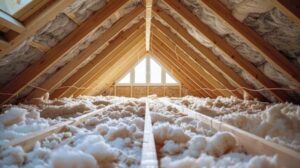A good taco restaurant relies on a variety of small touches to create a memorable dining experience. These include attentive service, a clean atmosphere, and attention to detail in the kitchen and dining area.

Best Tacos Houston start with the right tortilla, made from traditional nixtamal corn. Next comes the filling – traditional choices range from marinated beef and chicken to slow-cooked pork carnitas or grilled fish.
The basic ingredients of a taco include tortillas, fillings, salsa, and garnishes. To make a great taco, the tortilla should be fresh and crispy. The sauce should be well seasoned with herbs and vegetables. The meat should be grilled or seared and it should have a good texture. Toppings like sour cream, cheese, and salsa add a variety of flavors to the taco.
The first step in making a taco is preparing the tortilla. The tortilla can be made either with corn or flour. Corn tortillas are traditional and bring an authentic taste to the dish. Flour tortillas, on the other hand, are used in Tex-Mex dishes and are softer and more pliable. Choosing the right type of tortilla for your tacos is crucial, as it can make or break the flavor.
Next comes the filling. The options are endless, from seasoned beef and shredded chicken to pork carnitas and grilled fish. For a twist, try using beans or sweet potatoes in your tacos. For a perfect finish, add some tangy salsa and a sprinkle of cilantro or radish.
Whether it is carne asada, nopales, or al pastor, the quality of the protein in your taco is key. The meat should be juicy and grilled or seared to impart a rich, smoky flavor. Alternatively, you can opt for a taco al pastor which is a Mexican version of shawarma.
The salsa is a crucial part of any taco. It should be made with fresh, crisp vegetables and herbs, and it should be seasoned with spices and peppers. A good salsa should have a balance of sweet, sour, and spicy flavors. The salsa should also be served chilled to help the flavors pop.
Filling
When it comes to taco filling, there is a lot of room for creativity and experimentation. You can use meat, seafood, beans, cheese, vegetables, or even fruits to make your tacos unique. However, the most important thing to remember is that the filling should be flavorful and tasty. You can also add different sauces to the filling to give it a more complex taste.
A good taco starts with fresh, high-quality ingredients. For example, you should always use quality tortillas and meat. You should also try to use seasonal vegetables and fruits whenever possible. Additionally, you should choose toppings that are aesthetically pleasing and complement the flavor of the filling.
While there are many ways to make a taco, a basic taco filling is made with ground beef or chicken and served with salsa and sour cream. You can also use shredded lettuce and cheese for a lighter option. Depending on your preferences, you can also add other ingredients like chopped onions, sliced avocado, or guacamole.
Taco restaurants can use a variety of strategies to make their food stand out from the competition. For example, they can offer creative toppings like pickled vegetables and fruit salsas. This will help them stand out from the crowd and attract new customers.
If you are planning on serving tacos at your restaurant, you should make a batch of your taco filling ahead of time. This will save you time and ensure that your tacos are fresh and delicious. To prepare the taco filling, heat the olive oil in a large straight-sided sauté pan or Dutch oven. Then, add the ground beef and cook until it is browned. Add the garlic, onion flakes, and spices. Stir well to combine the ingredients. Once the mixture is thoroughly combined, reduce the heat to medium and simmer for 10 to 15 minutes.
Once the filling is cooked, it should be seasoned with salt and pepper to taste. You can also add a pinch of chili powder or red pepper flakes to add more spice. Then, add the tomato sauce and water. Simmer until the meat is fully cooked and the sauce is thickened.
Salsa
A great taco requires a good salsa, & this recipe for traditional tomato salsa is easy to make at home. It is chunky and packed with peppers, so it has a great flavor and heat level that can be tailored to your liking. It also works well with many other fillings for a variety of tacos.
Mexican cuisine is incredibly diverse & varied, with each cook adding their own “sazon,” or particular flavor that is imparted to the food they prepare. However, there is one dish that unites Mexicans everywhere: the taco. Tacos are simple to make, but they’re packed with complex flavors thanks to a combination of just a few ingredients & techniques.
While you may be able to find good store-bought salsa, homemade is always better! It is much easier to control the salt, sugar & other additives in homemade salsa. Plus, you can add more of the things you like to make it even more delicious.
When making your own salsa, it is important to use the freshest vegetables & fruits you can get your hands on, and also to use high quality ingredients. This will ensure that your finished product is flavorful and healthy.
Start with the best tomatoes you can find, preferably Roma or San Marzano tomatoes. They should be ripe and red with a little bit of green, but not overly soft. A medium onion, white or red is typical, but you can experiment with different types of onions for different flavors. Fresh garlic provides a robust flavor, but you can omit it for a milder salsa. And don’t skip the cilantro; it adds a critical flavor to salsa!
For a salsa with an interesting twist, try substituting the jalapeno pepper for poblano or serrano chili peppers. These have a more subtle heat and flavor, which can be ideal for those who prefer a milder salsa or are serving it to children. You can also mix it up by using a combination of different chili varieties or adding other spices to the salsa, such as ground cumin or paprika for added flavor. Another way to spice up your salsa is to roast the garlic cloves before adding them, which makes them sweeter & reduces their pungency. Finally, all great salsa needs a splash of acidity to brighten up the flavor and lighten the texture. Try lime juice (skip the zest; it’s too perfume-y), plain white vinegar or a red wine vinegar that pairs nicely with tomatoes.
Toppings
The filling and salsa are the heart of any taco, but toppings and sauces take it to a new level. These are the extras that add texture, flavor, and color to the dish. Toppings are also necessary to accommodate dietary needs and preferences, like gluten-free or vegan eating.
The most essential taco toppings include fresh cilantro and onion for their flavor and tangy crunch. Other herbs, like chives and basil, offer a slightly different taste while still providing some of the same benefits. Depending on the taste buds of your guests, you can even opt for a sprinkling of dill or mint. Green jalapenos are another popular taco ingredient, but if your guests are not ready for that much heat you can use red chiles instead.
Refried beans and salsa are another must-have. You can serve them on the side for dipping or spoon over your tacos for added nutrition and a rich, savory flavor. Refried beans are also a great way to make your tacos vegetarian.
Other non-dairy toppings that are essential for tacos include shredded cheese, which adds a salty dimension to the dish. If you don’t want to serve the standard American cheddar, try a more traditional Mexican mix or even cojita. You can also try a creamy queso dip, which can be melted on the spot and drizzled over the top of your tacos or served on the side for dipping.
A sprinkling of chopped cilantro and non-wilted lettuce can give your tacos a little color and texture. The leaves will not overpower the flavors of your fillings and they can help cut the fat in your meal. If you want a softer touch, you can replace the lettuce with finely diced radish or carrots.
A bit of acid is essential for balancing out the sweetness and spiciness in most taco fillings. A squeeze of lime or a drizzle of sour cream can tie everything together. Another popular acidic taco topping is pico de gallo, which is a traditional Mexican salsa with a zesty blend of tomatoes, onions, and cilantro. If you have an adventurous palate, try making a mango salsa for a sweeter taco experience.








